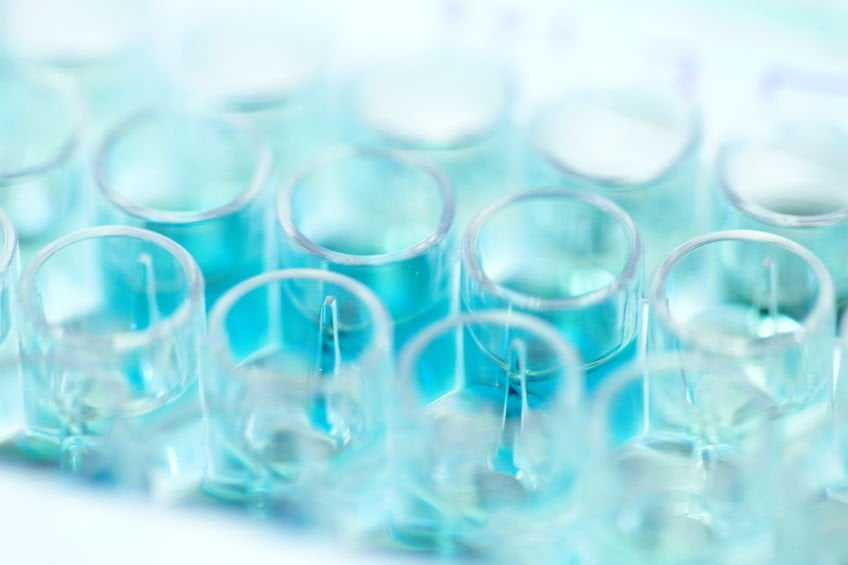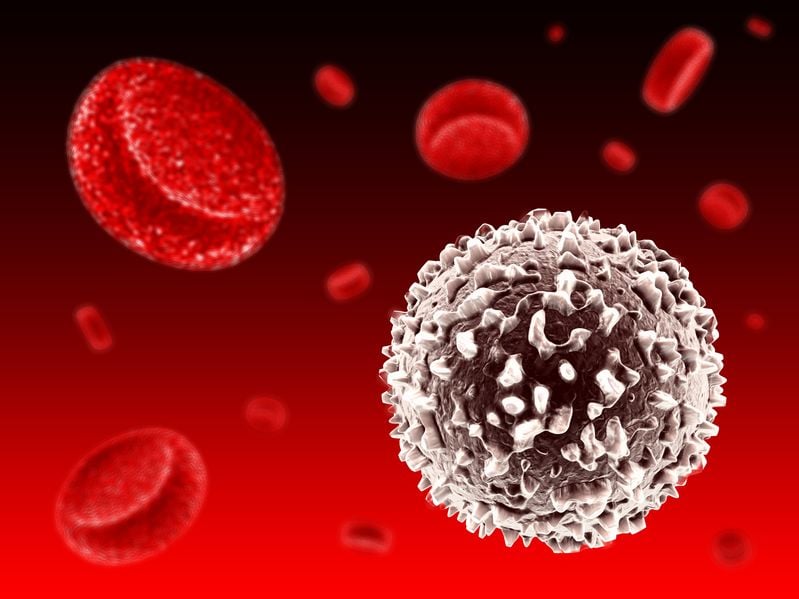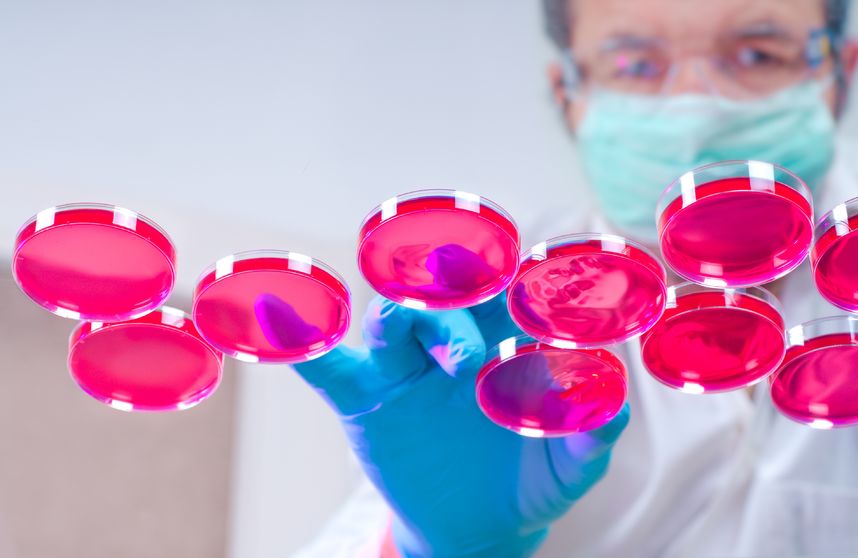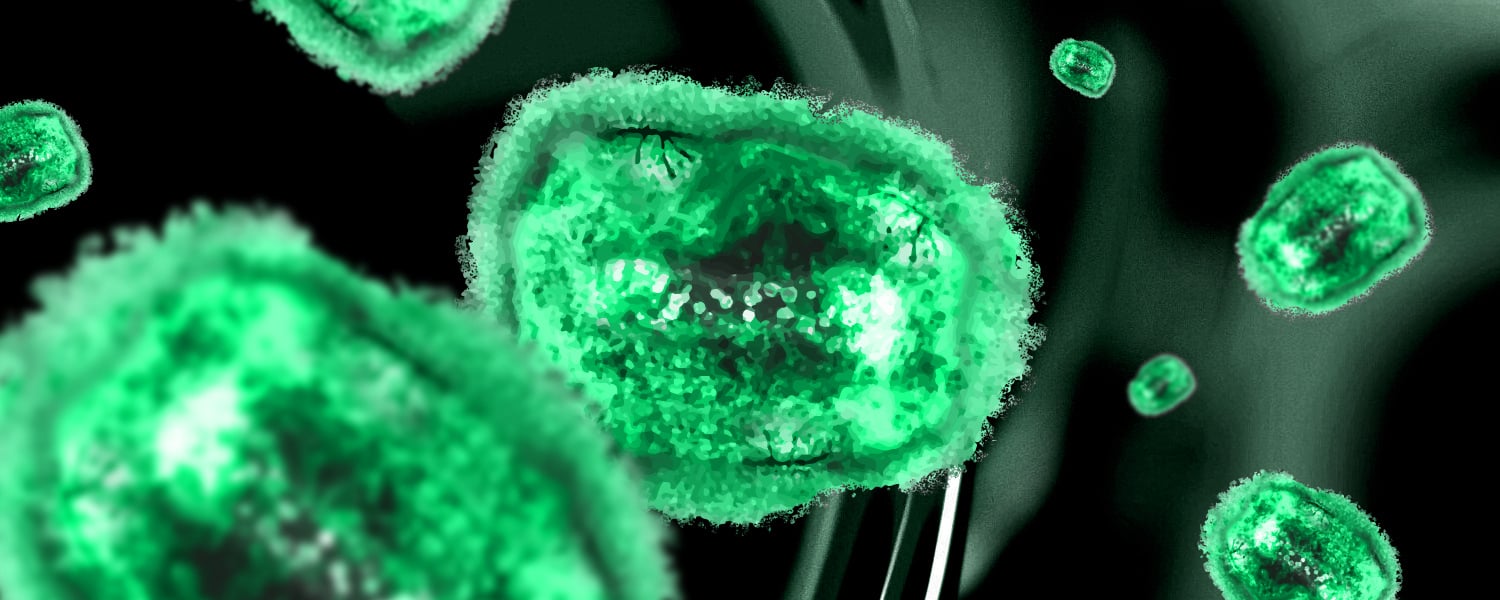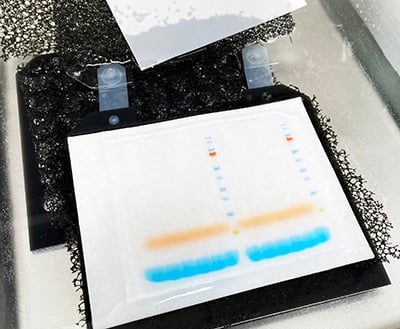In Cell viability assays: MTT assay application and protocol, we discussed the most commonly used cell viability assay. We will now look at alternatives to this well-loved lab staple. Although the MTT assay is undoubtedly the best known, it is not always the most appropriate cell viability assay to use. Here are some other assays you should consider for your next experiment.
Deceptively simple, this microscopy-based assay is nonetheless extremely useful and quickly performed. Based on the principle that viable cells with intact membranes do not take up Trypan blue stain (“exclude” it), dead cells can be distinguished from viable ones by their blue color while live cells will appear white. Simply stain your cell suspension with an equal volume of 0.4% Trypan blue, transfer to a hemocytometer, and visualize under microscope.
Water-soluble tetrazolium assays
Other MTT-related, tetrazolium-based assays include MTS, XTT, and WST. These assays have the advantage of fewer steps than the MTT, as they do not require solubilization of the formazan crystals. In addition, the XTT assay is superior in its sensitivity and range. However, these assays also present problems, such as interference with medium, serum albumin, and fatty acids.
Resazurin reduction assay (Alamar Blue)
Resazurin (7-hydroxy-3H-phenoxazin-3-one-10-oxide) is a blue dye, which is reduced to pink fluorescent resorufin in the presence of mitochondrial enzymes. This reduction can be quantified via fluorescence spectroscopy with peak absorption of resazurin at 600 nm and resorufin at 570 nm. The advantages of this assay include its rapidity, reliability, sensitivity, and cost. Furthermore, cells are kept intact and can be analyzed further. Commercial kits are available, and resazurin powder can also be purchased in isolation. This assay is easy to perform, as it only requires addition of 20 µL resazurin (0.15 mg/mL) to 100 µL cell suspension, and a 1- to 4-hour incubation step. Fluorescence is then read at an excitation wavelength of 560 nm and 590 nm for emission.
Protease viability marker assay
In this assay, cellular protease activity is measured as a proxy for viability. The permeable protease substrate GF-AFC (glycylphenylalanyl-aminofluorocoumarin) is able to penetrate live cells where it interacts with cytoplasmic aminopeptidases and generates a fluorescent signal that is proportional to the number of viable cells. Dead cells rapidly lose protease activity making this an ideal marker for viability. GF-AFC is non-toxic and treated cells can therefore still be used afterward in other assays. Cells of interest are cultured in opaque-walled plates, and an equal volume of GF-AFC substrate/buffer is added before incubation for 30 minutes to 3 hours. Fluorescence is then measured at 380-400 nm excitation and 505 nm emission wavelengths. Commercial kits are also available to measure cell viability and cytotoxicity in multiplex using this concept.
ATP assay
ATP is a useful biomarker of cell viability. When cells die, their membranes lose their integrity and ability to synthesize ATP. ATPases then deplete any remaining cytoplasmic ATP, meaning that any ATP leftover will come from metabolically active cells. The detection reagent used in this assay contains detergent to lyse cells, ATPase inhibitors, a substrate (luciferin) and firefly luciferase, which catalyzes the production of light photons from luciferin and ATP. The luminescent signal obtained from this reaction reaches its maximum after approximately 10 minutes and there are no other incubation steps required. The ATP assay is therefore the quickest and most sensitive viability assay, able to detect fewer than 10 cells per well, and is very well suited to high-throughput testing.
Real-time cell viability assay
With real-time viability assays, cells exposed to a stimulus are continuously monitored in real-time, and the emergence of dose-dependent cytotoxicity can therefore be detected over time. In this assay, purified luciferase and a luciferase pro-substrate are added to the cell culture. Viable cells reduce the pro-substrate to a form that can interact with luciferase, producing a fluorescent signal that is correlated with the number of live cells. Cell death is measured in real-time and the signal decreases as cells die. The assay reagents are nontoxic, and continuous measurements can be obtained for up to 72 hours. This assay is particularly valuable in high throughput cytotoxicity drug screenings, as it allows for dose-response investigations.
These are but a few of the many cell viability assays that are available to biologists today. There are also many commercial kits, each suited to a specific application. Do your homework and make sure you use the most appropriate technique for your experiment.
Quartzy is the world’s No. 1 lab management platform. We help scientists easily organize orders, manage inventory, and save money. We’re free and always will be. Visit Quartzy.com or reach out at info@quartzy.com.
Interested in writing for The Q? Send us an email!
